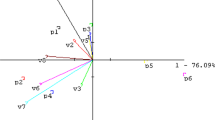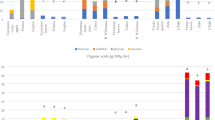Abstract
THE view that vitamin C is identical with methylnornarcotine has been advanced by Rygh1,2, who claims that narcotine occurs in unripe fruit and disappears with corresponding formation of vitamin C during ripening. According to Rygh, guinea-pigs receiving a scurvy-producing basal diet together with a suitable daily supplement of synthetic methylnornarcotine lose weight and die but without any of the typical symptoms of scurvy. Other workers3,4,5,6 have been unable to confirm this observation or to find narcotine in unripe fruit, and Dalmer and Moll5 have shown that methylnornarcotine as prepared by Rygh is not a single chemical substance.
This is a preview of subscription content, access via your institution
Access options
Subscribe to this journal
Receive 51 print issues and online access
$199.00 per year
only $3.90 per issue
Buy this article
- Purchase on Springer Link
- Instant access to full article PDF
Prices may be subject to local taxes which are calculated during checkout
Similar content being viewed by others
References
Rygh and Rygh, Z. physiol. Chem., 204, 114.
Rygh, Rygh and Laland, Z. physiol. Chem., 204, 105.
Smith and Zilva, Chem. Ind., 51, 166.
Grant, Smith and Zilva, Biochem. J., 26, 1628.
Dalmer and Moll, Z. physiol. Chem., 209, 211.
Dann, Forsyth, Harris, Mills and Innes, Lancet, 2, 237; 1932.
Rygh and Rygh, Z. physiol. Chem., 211, 275.
Moore and Ray, NATURE, 130, 997, Dec. 31, 1932.
Author information
Authors and Affiliations
Rights and permissions
About this article
Cite this article
DANN, W. Methylnornarcotine, Glycuronic Acid, and Vitamin C. Nature 131, 24–25 (1933). https://doi.org/10.1038/131024c0
Issue Date:
DOI: https://doi.org/10.1038/131024c0
This article is cited by
-
Cause of Changes in Rate of some Gas Reactions
Nature (1934)
Comments
By submitting a comment you agree to abide by our Terms and Community Guidelines. If you find something abusive or that does not comply with our terms or guidelines please flag it as inappropriate.



